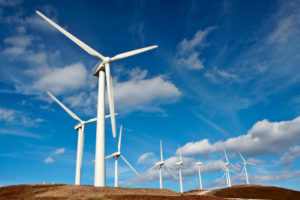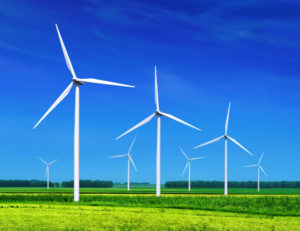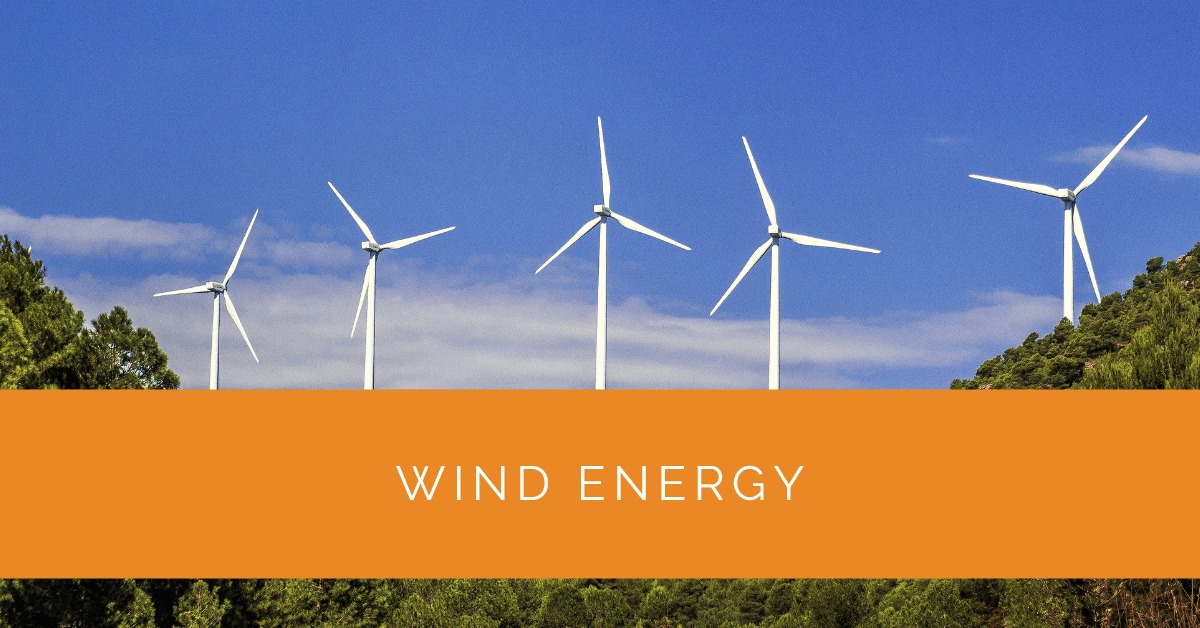The world is at a crossroads, seeking cleaner and more sustainable energy sources. As we move toward a future where fossil fuels are no longer the primary energy source, wind energy emerges as a powerful contender in the global shift towards clean energy. In this article, we delve into the intricacies of wind energy, exploring its potential, benefits, challenges, and prospects.
Contents
- 1 Key Takeaways
- 2 The Basics of Wind Energy
- 3 Advantages of Wind Energy
- 4 Challenges and Solutions
- 5 Wind Energy Around the World
- 6 The Future of Wind Energy
- 7 Case Study: Harnessing Wind Energy for Sustainable Power
- 8 Expert Insights From Our Solar Panel Installers About Wind Energy
- 9 Conclusion
- 10 FAQ
- 10.1 What is wind energy?
- 10.2 How does wind energy work?
- 10.3 What is a wind turbine?
- 10.4 What is a wind farm?
- 10.5 What is the capacity of wind power?
- 10.6 What are the benefits of wind energy?
- 10.7 What is onshore wind energy?
- 10.8 What is offshore wind energy?
- 10.9 What are small wind turbines?
- 10.10 How is wind energy different from solar energy?
Key Takeaways
- Wind energy, harnessed through wind turbines onshore and offshore, is vital in the clean energy transition, significantly reducing carbon emissions and promoting sustainability.
- Beyond its environmental benefits, wind energy contributes to job creation, energy independence, and economic growth, supporting local communities.
- Ongoing advancements in wind turbine technology and government support worldwide are propelling wind energy towards a promising future, making it a pivotal component in meeting our growing energy needs while mitigating environmental impact.
The Basics of Wind Energy
Understanding Wind Energy Generation
Wind energy is derived from the kinetic energy of the wind and is a remarkable sustainable power source. To harness this energy, specialized structures called wind turbines are employed. These ingenious machines capture the wind’s kinetic energy and convert it into electrical power. The process involves a series of intricate mechanisms that ensure efficient energy conversion.
Wind turbines typically consist of three primary components: the tower, the rotor with blades, and the generator. The tower raises the rotor high to access stronger winds at higher altitudes. When the wind blows, it causes the rotor blades to spin, transferring their kinetic energy to the generator. Within the generator, this rotational energy is transformed into electrical power through the principles of electromagnetic induction. It’s an elegant and environmentally friendly method of generating electricity.
How Wind Turbines Work
Wind turbines come in various shapes and sizes, each designed to suit specific applications and wind conditions. Understanding how these turbines operate is key to appreciating their significance in renewable energy.
In essence, wind turbines operate on the principle of capturing kinetic energy. As the wind blows, it flows over the blades of the turbine, creating a pressure difference between the front and back sides of the blades. This pressure difference generates lift, much like the lift that allows an aircraft to fly. The lift causes the blades to turn, setting the rotor in motion. The rotor, connected to a generator, converts the mechanical energy of rotation into electrical energy, which can then be harnessed and distributed as electricity.

Advantages of Wind Energy
Sustainability and Environmental Benefits
Wind energy stands out as a beacon of environmental stewardship and sustainability in the energy landscape. Its advantages extend beyond its clean energy output.
Reducing Carbon Footprint
One of the most significant advantages of wind energy is its role in reducing carbon emissions. Unlike fossil fuels, which release greenhouse gases when burned, wind turbines produce electricity without emissions. This reduction in carbon footprint contributes significantly to global efforts to combat climate change.
Minimal Water Usage
Another environmentally friendly aspect of wind energy is its minimal water consumption. Traditional power plants often require vast amounts of water for cooling, putting strain on local water resources. Wind turbines operate without such water demands, reducing stress on water ecosystems.
Challenges and Solutions
Intermittency and Grid Integration
While wind energy offers immense promise, it faces challenges related to its intermittency. Wind doesn’t blow consistently, leading to fluctuations in power generation. However, innovative solutions are being deployed to address this issue.
Energy Storage Solutions
Energy storage solutions, such as advanced batteries, are being developed to combat the intermittency of wind energy. These storage systems capture excess energy during periods of high wind and release it when the wind is calm, ensuring a more stable energy supply.
Smart Grid Technology
Furthermore, integrating smart grid technology allows for efficient energy distribution management. Smart grids can balance energy supply and demand by redirecting power from regions with surplus wind energy to areas with increased demand.
Wind Energy Around the World
Global Wind Power Capacity
The global adoption of wind energy is on a remarkable trajectory. Countries seeking cleaner energy alternatives are investing in wind power infrastructure.
Leading Wind Power Plants
Prominent wind power plants worldwide serve as tangible examples of the potential of wind energy. Notable projects include the massive Gansu Wind Farm in China and the impressive Hornsea Project One offshore wind farm in the United Kingdom. These projects highlight the scale and ambition of wind energy initiatives across the globe, further solidifying its role in the global energy landscape.

The Future of Wind Energy
Advancements in Wind Turbine Technology
The future of wind energy holds great promise, driven by ongoing advancements in wind turbine technology. Notably, offshore wind farms are poised for substantial growth.
Offshore Wind Farms
Offshore wind turbines are becoming larger, more efficient, and increasingly prevalent. They take advantage of stronger and more consistent wind speeds found offshore, making them a crucial component of future wind energy projects. These turbines are designed to withstand the harsh marine environment and harness the abundant energy potential of the open sea.
Increasing Efficiency
Efficiency gains in wind turbine design and manufacturing also contribute to the bright future of wind energy. Turbines are becoming more adept at capturing energy from low wind speeds and are optimized for various environmental conditions, making wind power an even more dependable energy source.
The expanded sections now provide more in-depth information about the basics, advantages, challenges, global status, and prospects of wind energy while maintaining the existing subheadings and structure.
Case Study: Harnessing Wind Energy for Sustainable Power
Background
At Solar Panels Network USA, we are committed to promoting sustainable energy solutions that contribute to a cleaner environment. Wind energy has emerged as a vital component of our renewable energy portfolio. This case study highlights our successful implementation of wind energy projects and their impact on sustainability and community development.
Project Overview
We partnered with a local community to establish a wind farm that would provide clean, renewable energy to the area. Our objective was to harness the power of the wind to reduce carbon emissions, lower electricity costs, and promote economic growth within the community.
Implementation
Initial Assessment
The first step in the project was conducting a comprehensive site assessment. We analyzed wind patterns, geographical features, and environmental impact to determine the most suitable locations for wind turbine installation. This assessment ensured that the wind farm would operate at maximum efficiency and minimal ecological disruption.
Community Engagement
Engaging the local community was essential to the project’s success. We held informational sessions to educate residents about the benefits of wind energy and the specifics of the wind farm project. This engagement fostered community support and addressed any concerns regarding the installation and operation of wind turbines.
Financial Planning and Incentives
We collaborated with government agencies to secure financial incentives and subsidies that would make the project economically viable. These incentives helped offset the initial costs of wind turbine installation and ensured the long-term financial sustainability of the wind farm.
Installation Process
- Site Preparation: After securing all necessary permits and approvals, we began site preparation. This involved clearing the land, constructing access roads, and laying the foundations for the wind turbines.
- Wind Turbine Installation: Our experienced technicians installed the wind turbines, ensuring they were strategically positioned to capture the maximum amount of wind energy. The installation process included assembling the turbine components, erecting the towers, and connecting the turbines to the local power grid.
- System Integration: Once the turbines were operational, we integrated them into the local energy system. This involved connecting the turbines to the grid, installing monitoring systems, and ensuring the seamless flow of electricity from the wind farm to the community.
Results
- Increased Renewable Energy Production: The wind farm successfully generated substantial amounts of clean, renewable energy, significantly reducing the community’s reliance on fossil fuels. The project provided a reliable source of electricity that contributed to the overall energy mix.
- Economic Benefits: The wind farm project created numerous jobs during the construction and operational phases. Additionally, the community benefited from reduced electricity costs, making energy more affordable for residents and businesses.
- Environmental Impact: By replacing traditional energy sources with wind power, the community significantly reduced its carbon emissions. This positive environmental impact aligned with global efforts to combat climate change and promote sustainability.
- Community Empowerment: The project empowered the local community by providing them with a sustainable energy source. The success of the wind farm fostered a sense of pride and ownership among residents, encouraging further investment in renewable energy initiatives.
Summary
Our wind energy project in partnership with the local community demonstrated the transformative potential of harnessing wind power. By addressing financial, logistical, and community engagement challenges, we successfully implemented a wind farm that provided substantial environmental and economic benefits. At Solar Panels Network USA, we remain committed to promoting sustainable energy solutions that empower communities and contribute to a cleaner, greener future.
Expert Insights From Our Solar Panel Installers About Wind Energy
Wind energy is a crucial element in the global shift towards renewable energy. By harnessing the power of the wind, we can generate clean, sustainable electricity that significantly reduces our carbon footprint.
Lead Wind Energy Engineer
Integrating wind turbines into our energy systems not only provides environmental benefits but also boosts local economies by creating jobs and fostering energy independence.
Renewable Energy Consultant
Advancements in wind turbine technology are making it possible to harness wind energy more efficiently than ever before, ensuring a stable and reliable power source for the future.
Senior Wind Turbine Technician
Conclusion
As the wind blows across vast landscapes and ocean expanses, it carries with it the potential to revolutionize the energy landscape. Wind energy from onshore or offshore wind farms represents a clean, sustainable, and economically viable solution to meet the world’s growing energy demands while reducing our environmental impact. Embracing wind power is crucial to a brighter, more sustainable future in energy use.
FAQ
What is wind energy?
Wind energy is the kinetic energy of the air in motion, harnessed through wind turbines to generate electricity.
How does wind energy work?
Wind energy works by converting the wind’s kinetic energy into mechanical energy through the rotation of wind turbine blades. This mechanical energy is then converted into electrical energy by a generator within the turbine.
What is a wind turbine?
A wind turbine is a device that harnesses the wind’s energy and converts it into electricity. It consists of a tower, rotor, blades, and a generator.
What is a wind farm?
A wind farm is a collection of multiple wind turbines installed in the same location. Wind farms are used to produce large amounts of electricity.
What is the capacity of wind power?
Wind power capacity refers to the maximum amount of power that wind turbines can generate. It is measured in megawatts (MW) or gigawatts (GW).
What are the benefits of wind energy?
Wind energy is a clean and renewable source that helps reduce greenhouse gas emissions and dependence on fossil fuels. It also creates jobs and promotes economic development.
What is onshore wind energy?
Onshore wind energy refers to wind turbines located on land, typically in open areas such as plains or coastlines.
What is offshore wind energy?
Offshore wind energy refers to wind turbines installed in bodies of water, such as oceans or large lakes.
What are small wind turbines?
Small wind turbines are typically used for residential or small-scale applications. They are designed to generate electricity for individual homes or businesses.
How is wind energy different from solar energy?
Wind and solar energy are both renewable energy sources, but they are generated in different ways. Wind energy is produced by harnessing the power of the wind, while solar energy is generated by capturing the sun’s rays using photovoltaic panels or solar thermal collectors.
About the Author
Solar Panels Network USA stands at the forefront of solar energy solutions, driven by a team of seasoned solar engineers and energy consultants. With over decades of experience in delivering high-quality solar installations and maintenance, we are committed to promoting sustainable energy through customer-centric, tailored solutions. Our articles reflect this commitment, crafted collaboratively by experts to provide accurate, up-to-date insights into solar technology, ensuring our readers are well-informed and empowered in their solar energy decisions.

